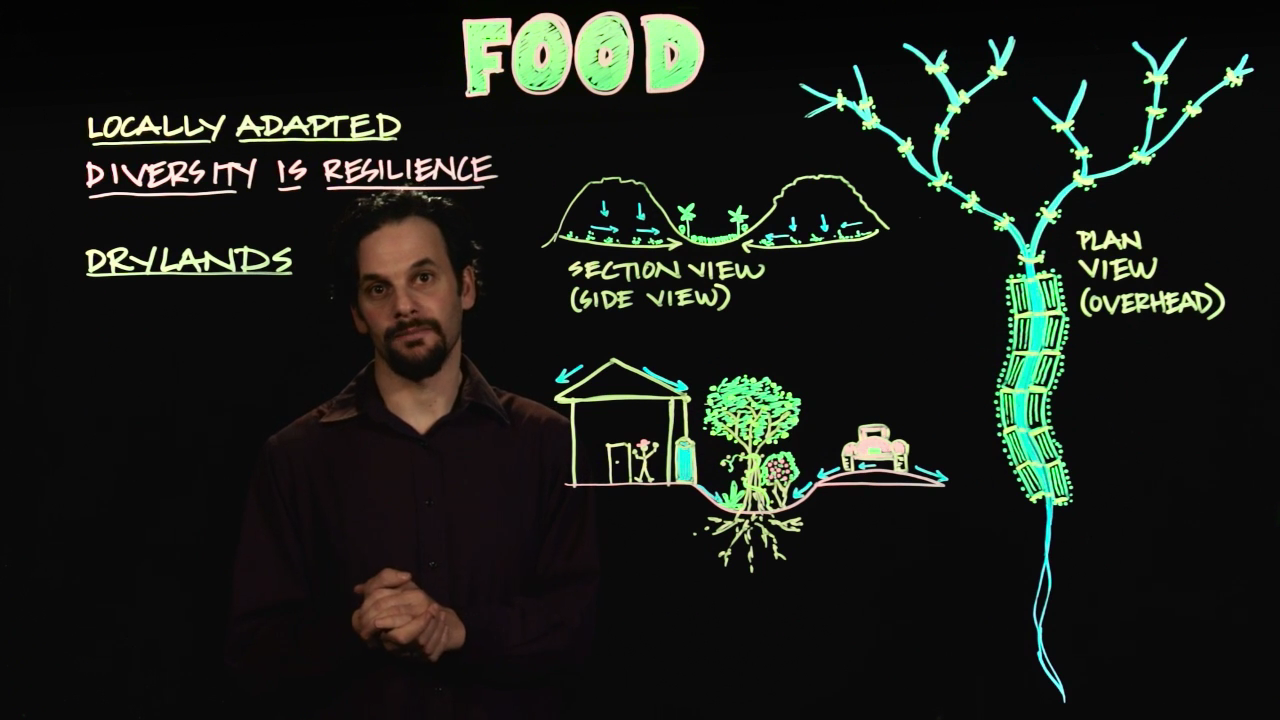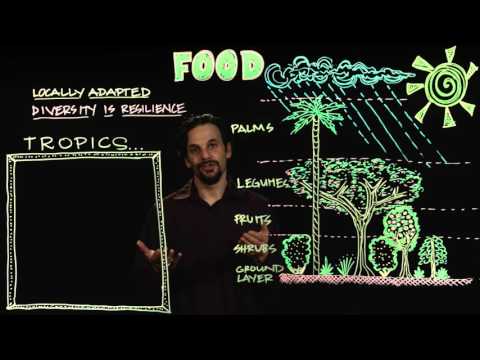4.4: Food
- Page ID
- 14312
\( \newcommand{\vecs}[1]{\overset { \scriptstyle \rightharpoonup} {\mathbf{#1}} } \)
\( \newcommand{\vecd}[1]{\overset{-\!-\!\rightharpoonup}{\vphantom{a}\smash {#1}}} \)
\( \newcommand{\dsum}{\displaystyle\sum\limits} \)
\( \newcommand{\dint}{\displaystyle\int\limits} \)
\( \newcommand{\dlim}{\displaystyle\lim\limits} \)
\( \newcommand{\id}{\mathrm{id}}\) \( \newcommand{\Span}{\mathrm{span}}\)
( \newcommand{\kernel}{\mathrm{null}\,}\) \( \newcommand{\range}{\mathrm{range}\,}\)
\( \newcommand{\RealPart}{\mathrm{Re}}\) \( \newcommand{\ImaginaryPart}{\mathrm{Im}}\)
\( \newcommand{\Argument}{\mathrm{Arg}}\) \( \newcommand{\norm}[1]{\| #1 \|}\)
\( \newcommand{\inner}[2]{\langle #1, #2 \rangle}\)
\( \newcommand{\Span}{\mathrm{span}}\)
\( \newcommand{\id}{\mathrm{id}}\)
\( \newcommand{\Span}{\mathrm{span}}\)
\( \newcommand{\kernel}{\mathrm{null}\,}\)
\( \newcommand{\range}{\mathrm{range}\,}\)
\( \newcommand{\RealPart}{\mathrm{Re}}\)
\( \newcommand{\ImaginaryPart}{\mathrm{Im}}\)
\( \newcommand{\Argument}{\mathrm{Arg}}\)
\( \newcommand{\norm}[1]{\| #1 \|}\)
\( \newcommand{\inner}[2]{\langle #1, #2 \rangle}\)
\( \newcommand{\Span}{\mathrm{span}}\) \( \newcommand{\AA}{\unicode[.8,0]{x212B}}\)
\( \newcommand{\vectorA}[1]{\vec{#1}} % arrow\)
\( \newcommand{\vectorAt}[1]{\vec{\text{#1}}} % arrow\)
\( \newcommand{\vectorB}[1]{\overset { \scriptstyle \rightharpoonup} {\mathbf{#1}} } \)
\( \newcommand{\vectorC}[1]{\textbf{#1}} \)
\( \newcommand{\vectorD}[1]{\overrightarrow{#1}} \)
\( \newcommand{\vectorDt}[1]{\overrightarrow{\text{#1}}} \)
\( \newcommand{\vectE}[1]{\overset{-\!-\!\rightharpoonup}{\vphantom{a}\smash{\mathbf {#1}}}} \)
\( \newcommand{\vecs}[1]{\overset { \scriptstyle \rightharpoonup} {\mathbf{#1}} } \)
\( \newcommand{\vecd}[1]{\overset{-\!-\!\rightharpoonup}{\vphantom{a}\smash {#1}}} \)
\(\newcommand{\avec}{\mathbf a}\) \(\newcommand{\bvec}{\mathbf b}\) \(\newcommand{\cvec}{\mathbf c}\) \(\newcommand{\dvec}{\mathbf d}\) \(\newcommand{\dtil}{\widetilde{\mathbf d}}\) \(\newcommand{\evec}{\mathbf e}\) \(\newcommand{\fvec}{\mathbf f}\) \(\newcommand{\nvec}{\mathbf n}\) \(\newcommand{\pvec}{\mathbf p}\) \(\newcommand{\qvec}{\mathbf q}\) \(\newcommand{\svec}{\mathbf s}\) \(\newcommand{\tvec}{\mathbf t}\) \(\newcommand{\uvec}{\mathbf u}\) \(\newcommand{\vvec}{\mathbf v}\) \(\newcommand{\wvec}{\mathbf w}\) \(\newcommand{\xvec}{\mathbf x}\) \(\newcommand{\yvec}{\mathbf y}\) \(\newcommand{\zvec}{\mathbf z}\) \(\newcommand{\rvec}{\mathbf r}\) \(\newcommand{\mvec}{\mathbf m}\) \(\newcommand{\zerovec}{\mathbf 0}\) \(\newcommand{\onevec}{\mathbf 1}\) \(\newcommand{\real}{\mathbb R}\) \(\newcommand{\twovec}[2]{\left[\begin{array}{r}#1 \\ #2 \end{array}\right]}\) \(\newcommand{\ctwovec}[2]{\left[\begin{array}{c}#1 \\ #2 \end{array}\right]}\) \(\newcommand{\threevec}[3]{\left[\begin{array}{r}#1 \\ #2 \\ #3 \end{array}\right]}\) \(\newcommand{\cthreevec}[3]{\left[\begin{array}{c}#1 \\ #2 \\ #3 \end{array}\right]}\) \(\newcommand{\fourvec}[4]{\left[\begin{array}{r}#1 \\ #2 \\ #3 \\ #4 \end{array}\right]}\) \(\newcommand{\cfourvec}[4]{\left[\begin{array}{c}#1 \\ #2 \\ #3 \\ #4 \end{array}\right]}\) \(\newcommand{\fivevec}[5]{\left[\begin{array}{r}#1 \\ #2 \\ #3 \\ #4 \\ #5 \\ \end{array}\right]}\) \(\newcommand{\cfivevec}[5]{\left[\begin{array}{c}#1 \\ #2 \\ #3 \\ #4 \\ #5 \\ \end{array}\right]}\) \(\newcommand{\mattwo}[4]{\left[\begin{array}{rr}#1 \amp #2 \\ #3 \amp #4 \\ \end{array}\right]}\) \(\newcommand{\laspan}[1]{\text{Span}\{#1\}}\) \(\newcommand{\bcal}{\cal B}\) \(\newcommand{\ccal}{\cal C}\) \(\newcommand{\scal}{\cal S}\) \(\newcommand{\wcal}{\cal W}\) \(\newcommand{\ecal}{\cal E}\) \(\newcommand{\coords}[2]{\left\{#1\right\}_{#2}}\) \(\newcommand{\gray}[1]{\color{gray}{#1}}\) \(\newcommand{\lgray}[1]{\color{lightgray}{#1}}\) \(\newcommand{\rank}{\operatorname{rank}}\) \(\newcommand{\row}{\text{Row}}\) \(\newcommand{\col}{\text{Col}}\) \(\renewcommand{\row}{\text{Row}}\) \(\newcommand{\nul}{\text{Nul}}\) \(\newcommand{\var}{\text{Var}}\) \(\newcommand{\corr}{\text{corr}}\) \(\newcommand{\len}[1]{\left|#1\right|}\) \(\newcommand{\bbar}{\overline{\bvec}}\) \(\newcommand{\bhat}{\widehat{\bvec}}\) \(\newcommand{\bperp}{\bvec^\perp}\) \(\newcommand{\xhat}{\widehat{\xvec}}\) \(\newcommand{\vhat}{\widehat{\vvec}}\) \(\newcommand{\uhat}{\widehat{\uvec}}\) \(\newcommand{\what}{\widehat{\wvec}}\) \(\newcommand{\Sighat}{\widehat{\Sigma}}\) \(\newcommand{\lt}{<}\) \(\newcommand{\gt}{>}\) \(\newcommand{\amp}{&}\) \(\definecolor{fillinmathshade}{gray}{0.9}\)
This video looks at some of the major themes for food production in Permaculture systems. We address some controversial topics like genetically engineered organisms, and do a quick breeze through the major themes and strategies of food production in the major climate zones we are looking at in this class.

- Intro to Permaculture: Permaculture Design for Food – Video Transcript
References
- Dryland Pasture Management
- Unesco – Environmental Impacts of Converting Moist Tropical Forest to Agriculture and Plantations
Featured Links
There is much more to Permaculture food production then can be covered in the video presentation above, so we encourage you to look through these links as an introduction into Permaculture food systems. Aside from the major climate zones listed below, there are resources and strategies for high elevation areas, the Subtropics, cold deserts, sand dune areas, and the list goes on. The techniques of food production are many, and the plant choices and methods are very specific to the conditions of each area. A Permaculturist in a region inevitably becomes an experimenter and propagator of good edible plant varieties. The field is wide open, and by no means has it all been figured out, so go out there, make plenty of mistakes, and share your successes.
Know Thy Plant!
Many species of plants are what we describe as “rampant”, which is something that flourishes or spreads unchecked. Introduction of some plant species into your site can create huge maintenance problems for you, and also spread that plant into the surrounding environment through seed dispersal and vegetative growth. So it’s really important to do your research before introducing any new species. Here’s a link to the United States Department of Agriculture’s Noxious Plant List. The agriculture department of your country should be able to provide a similar list.
Introduction of rampant and invasive species is a controversial subject in the Permaculture field, and has been a source of conflict between agricultural agencies, native plant enthusiasts, and Permaculture’s horticultural experimenters. To read more on Permaculture views on “invasion biology”, Tao Orion’s book “Beyond the War on Invasive Species: A Permaculture Approach to Ecosystem Restoration” is a well-researched text. This is not a simple subject, and is one that warrants much consideration when planning your food and forest systems.
“Know Thy Plant” is a good mantra when making any species selection, and we encourage you to exercise great caution, because the introduction of a new rampant species of plant or animal can cause long term changes to an ecosystem and have many unintended consequences. To learn more about the hazards of introducing rampant or invasive species, please read this document.
Additional Resources
Tropics
- Tips on Growing Vegetables in the Tropics
- Banana Circle Construction and Placement
- Urban Frontyard Food Forest
- Suburban Garden Plan
- Cover Crops Solution Chart
- Seeing the Garden in the Jungle by Toby Hemenway
- Ahupua’a Explained
- Useful Tropical Plant List
- Subtropical Plant List for all Layers of a Food Garden
Temperate
- Mixed Vegetable Gardening for Temperate Climates
- Use Microclimates for Frost Protection by Joel Glanzberg and Ben Haggard
- Simple Straw Bale Cold Frame by Sue Mullen
- Visit Sepp Holzer’s Permaculture Farm
- Temperate Climate Permaculture Plant Index
- Permaculture Q & A: Perennial Plants for Temperate Climates
- Carbon Farming Practices
- Masanobu Fukuoka’s Natural Farming and Permaculture
Dryland
- Keyholes for Dryland Gardens by Vicki Marvick
- Desert Food Forest
- Using Edible Flowers by Ben Haggard in the Drylands
- Permaculture Under Saline and Drought Conditions
- Intensive Rotational Livestock Grazing
- Advanced Cell Grazing Livestock Systems at Zaytuna Farm
- Edible Plants in the US Desert
- Desert Harvesters: Appreciating the Native Foods of the Sonoran Desert
Multi-climate
Podcasts
- Earth Repair Radio: Don Tipping onOrganic Seed Farming and the GMO Struggle
- Earth Repair Radio: Rico Zook onPermaculture and India’s 400 Million Farmers
Image Sources
pixabay.com/en/pumpkins-vegetables-orange-autumn-1004417/



